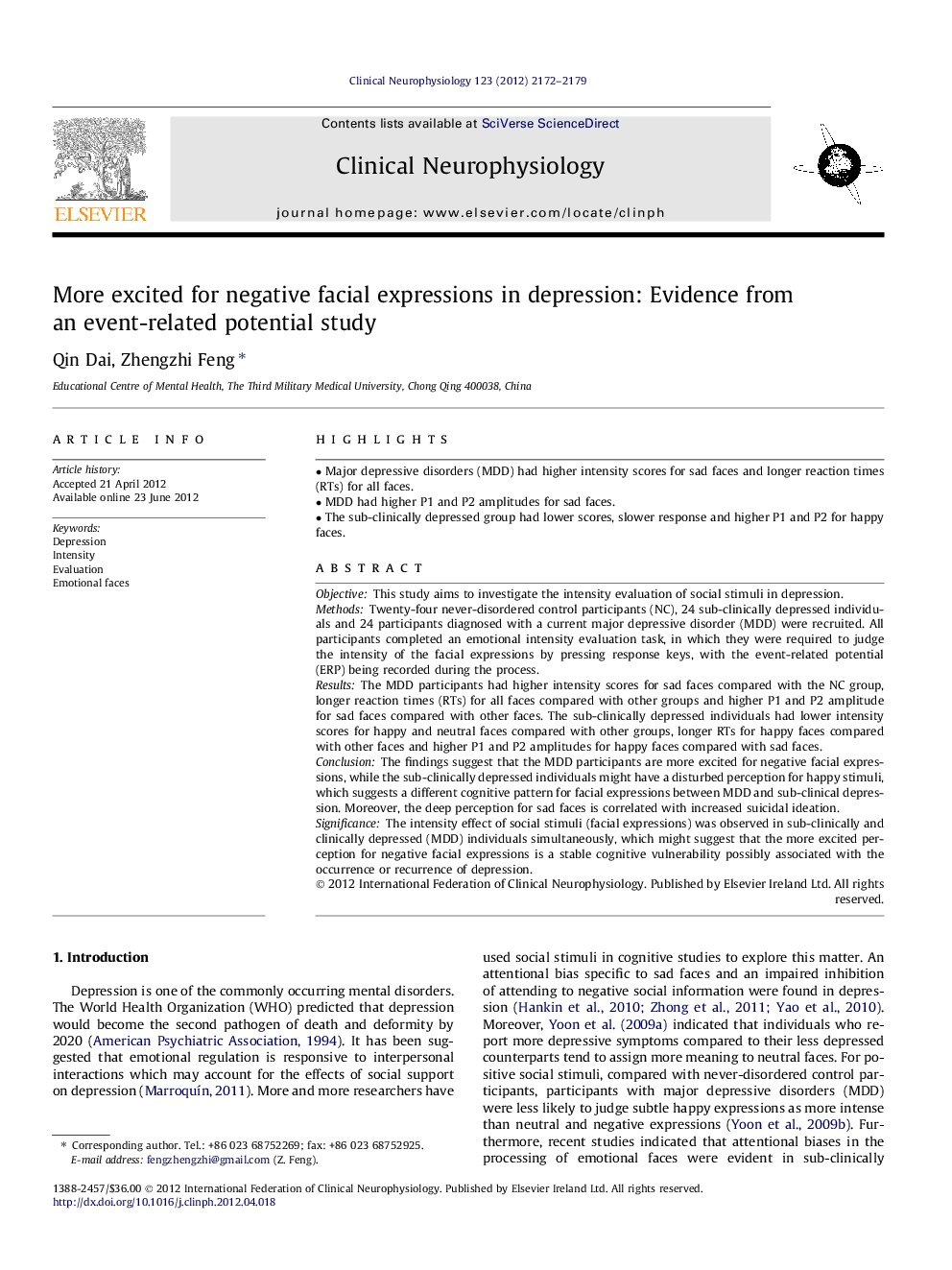| Article ID | Journal | Published Year | Pages | File Type |
|---|---|---|---|---|
| 3043106 | Clinical Neurophysiology | 2012 | 8 Pages |
ObjectiveThis study aims to investigate the intensity evaluation of social stimuli in depression.MethodsTwenty-four never-disordered control participants (NC), 24 sub-clinically depressed individuals and 24 participants diagnosed with a current major depressive disorder (MDD) were recruited. All participants completed an emotional intensity evaluation task, in which they were required to judge the intensity of the facial expressions by pressing response keys, with the event-related potential (ERP) being recorded during the process.ResultsThe MDD participants had higher intensity scores for sad faces compared with the NC group, longer reaction times (RTs) for all faces compared with other groups and higher P1 and P2 amplitude for sad faces compared with other faces. The sub-clinically depressed individuals had lower intensity scores for happy and neutral faces compared with other groups, longer RTs for happy faces compared with other faces and higher P1 and P2 amplitudes for happy faces compared with sad faces.ConclusionThe findings suggest that the MDD participants are more excited for negative facial expressions, while the sub-clinically depressed individuals might have a disturbed perception for happy stimuli, which suggests a different cognitive pattern for facial expressions between MDD and sub-clinical depression. Moreover, the deep perception for sad faces is correlated with increased suicidal ideation.SignificanceThe intensity effect of social stimuli (facial expressions) was observed in sub-clinically and clinically depressed (MDD) individuals simultaneously, which might suggest that the more excited perception for negative facial expressions is a stable cognitive vulnerability possibly associated with the occurrence or recurrence of depression.
► Major depressive disorders (MDD) had higher intensity scores for sad faces and longer reaction times (RTs) for all faces. ► MDD had higher P1 and P2 amplitudes for sad faces. ► The sub-clinically depressed group had lower scores, slower response and higher P1 and P2 for happy faces.
